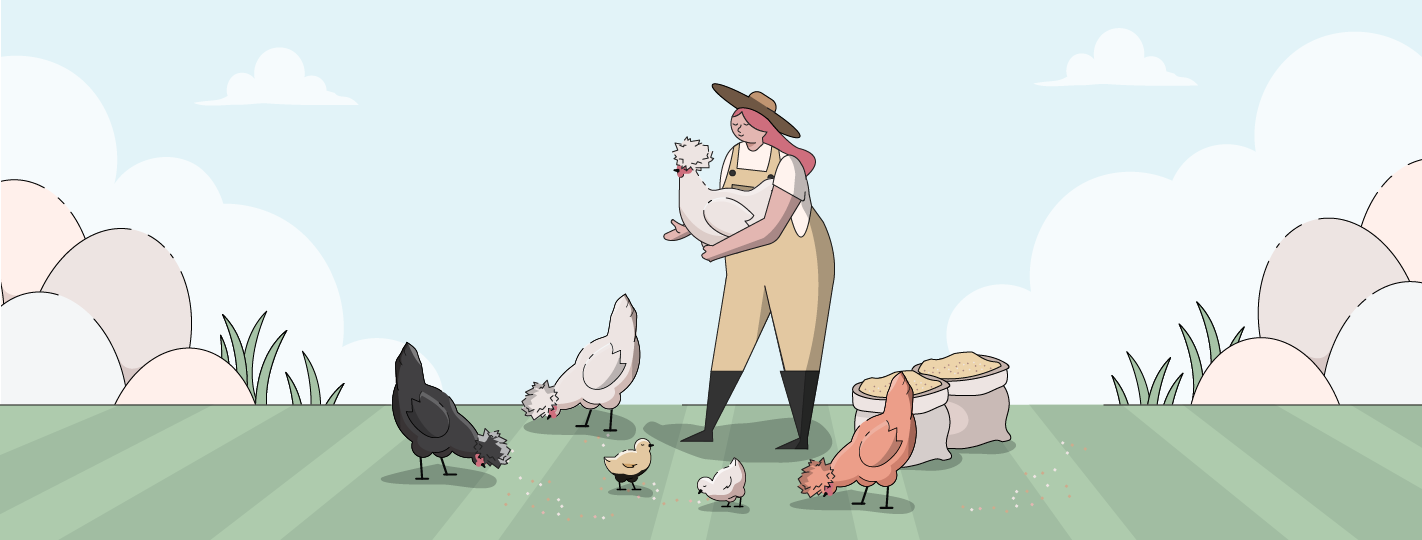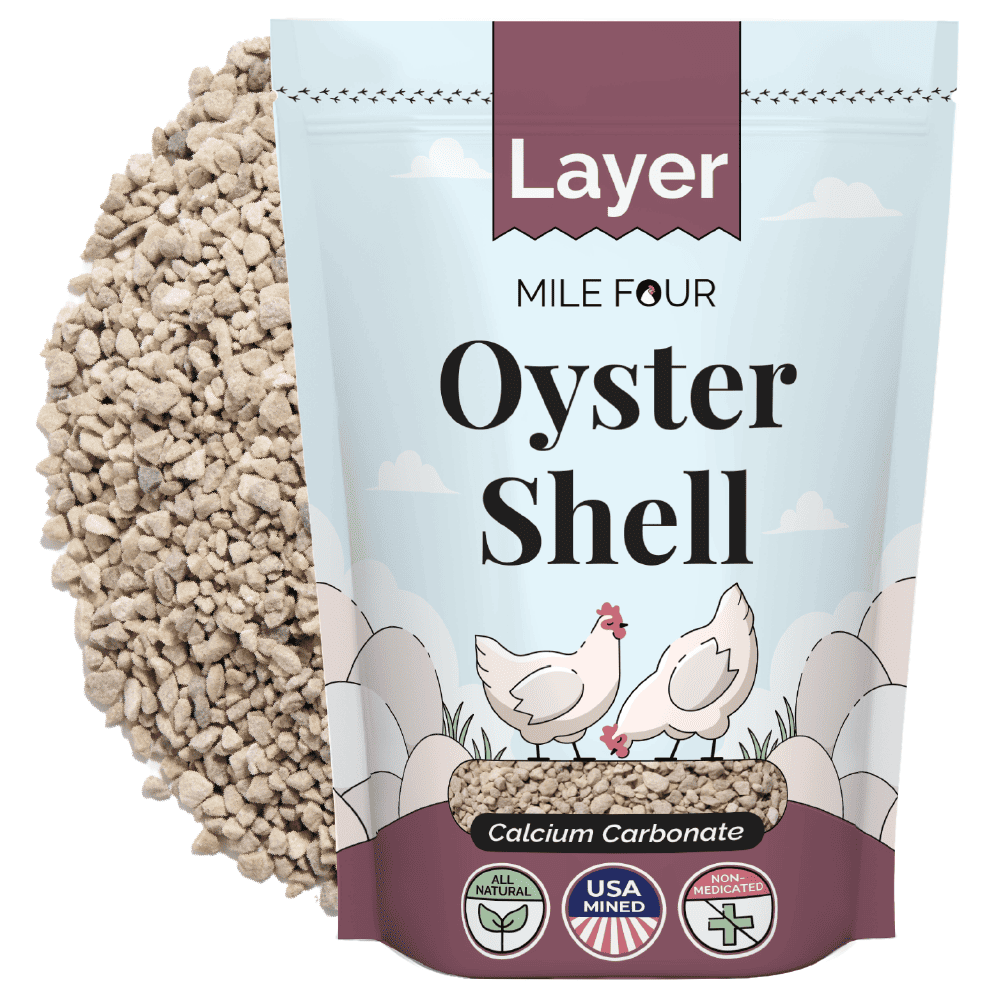Polish Chickens are some of the prettiest birds you can have in your flock. These chickens will be turning heads whenever somebody comes over! Add that to their relaxed temperament and you get a wonderful chicken that will be your buddy for years to come!
Polish Chickens
Quick Chick(en) Facts
| Origin | The Netherlands; their exact origins are unknown, however |
| Colors | Non-bearded white crested black; golden; silver; white Bearded golden; silver; white; buff laced non-bearded buff laced non-bearded white crested blue |
| Weight | 4 lb. - 5 lb. |
| Lifespan | 8-9 Years |
| Rate of Lay/yr | 150-200 eggs |
| Egg size | Medium |
| Egg Color | White/Cream |
| Heat Hardy | Tolerant |
| Cold Hardy | No |
| Broodiness | Not typically |
| Disease Susceptibility | Water on the brain, mites & lice |
| Temperament | Docile, friendly |
| Beginner friendly | Yes |
| Cost to purchase | $4-$8/chick |
Quick Jump
Chapter 2: History of Polish Chickens
Chapter 3: Polish Chickens for Sale
Chapter 4: Polish Chicken Egg Laying
Chapter 5: Polish Chicken Health Issues & Care
Chapter 6: Polish Chicken Temperament
Chapter 7: Feeding Polish Chickens
Chapter 8: Coop & Run Size for Polish Chickens
Chapter 9: Pros & Cons of Polish Chickens
Chapter 10: Polish Chicken FAQs
Chapter 1: Appearance of Polish Chickens
Polish chickens are known affectionately as the Top Hat Chicken. This is due to the feathery crest that sits atop their heads.
This distinguishing factor will ensure you’ll never mistake your Polish chicken for another member of the flock, and it also makes them a prized possession for somebody who wants to show their chickens at competitions.
Despite the uniqueness in their appearance, they are generally a very easy chicken to find at a hatchery, should you want to add a few of them to your coop.
They are often compared to the Silkie chicken in appearance, but another distinguishing factor is the lack of feathers on their legs or feet.
Different varieties of the Polish chicken exist, including:
- Bearded
- Non-Bearded
- Frizzled
Size
Polish chickens have two different sizes that are recognized by the American Poultry Association:
- Standard
- Bantam
Generally, a standard female Polish chicken will weigh around 4-5 lb., while the male birds can weigh up to 6 lb.
The bantam Polish chickens will weigh no more than 2 lb., and these are the ones you're most likely to have in your backyard.

Share this Image On Your Site
Colors
Polish chickens come in a variety of colors that are recognized by the American Poultry Association.
These are:
1. Non-bearded white crested
Chapter 2: History of Polish Chickens
A European breed, the Polish chicken’s exact origins are currently unknown.
The earliest accounts of them come from the Netherlands, where they were portrayed in paintings around the 15th century.
It is unknown whether they originated in Poland, or are named after the Dutch word “Pol,” meaning head.
This is likely due to their skulls, which are dome shaped, as well as their obvious distinguishing feature - the top hat!

Polish Chicken’s Journey
Known to many in Europe as far back as the 15th century, the Polish chicken didn’t make its way to the Americas until the mid-1800’s.
There are many stories surrounding the origins of the Polish chicken, but one of the most prevalent is that when the King of Poland was unseated in 1736, he fled to France with his favorite pet, the Polish chicken.
The accuracy of the story is unclear, but it’s pretty cool regardless, right?
It wasn’t until the 1870’s that the American Poultry Association accepted the first three varieties into the Standard of Perfection, though, and has added additional varieties ever since.
The latest of these varieties, the Continental Non-Bearded Black Crested Polish wasn’t accepted until 1996. Rude!

Share this Image On Your Site
Chapter 3: Polish Chickens for Sale
As mentioned earlier, Polish chickens are quite a common chicken to find at hatcheries despite their unique appearance.
They were bred originally for their excellent egg-laying abilities, but if you’re looking for a master egg layer nowadays, you’ll struggle to get more than 200/year from your Polish hens.
The best hatcheries to purchase Polish chickens from are:
You’ll want to note that if it is your first time buying chicks online, they will be shipped to you with enough food to last the trip.
You will have to pick them up at the Post Office and have a member of staff watch you physically open the box to ensure they were delivered in good shape.
Should you have any problems with your delivery, most hatcheries will be happy to send you a replacement shipment.
If you need more information on purchasing chickens from a hatchery, read our Best Hatcheries Guide here!
Polish Chicken Hatcheries
Unlike the Silkie chicken, there aren’t any Polish chicken specific hatcheries that we could find, but given how common they are at the bigger hatcheries, you won’t have to worry about not finding your perfect Polish.
If you live close to one of the many hatcheries across the United States, you can visit the chicks in person and take them home, as opposed to waiting for them in the mail.
Chapter 4: Polish Chicken Egg Laying
Polish Rate of Lay
Back in the day, Polish chickens were bred specifically for their egg-laying abilities, but in recent years they’d transformed into show birds.
That’s not to say that they won’t lay plenty of eggs, but there are many other breeds to choose from if you are keeping chickens simply for their eggs alone.
Polish chickens will lay around 150-200 eggs a year, which works out to around 3-4 per week, which is around the middle of the pack in terms of egg-laying abilities in chickens.

Share this Image On Your Site
Polish Chicken Broodiness
The good thing about this number, however, is that Polish chickens are not known for their broodiness.
This means you’ll easily be able to collect the eggs they do lay because they won’t have the tendency to sit on them and hope they hatch.
If you’re looking to hatch some Polish chicks, this could pose a problem.
Should you want to hatch some Polish chicks, you’ll need an incubator and the knowledge on how to hatch chicks yourself, or a hen in your flock that has the tendency to go broody.
Silkies are perfect for this job, as they go broody quite often, and are more than happy to take other hen’s eggs and sit on them.
If you want to learn more about hatching eggs by yourself, check out our handy guide right here!
Chapter 5: Polish Chicken Health Issues & Care
Water on the Brain
One issue to look out for with Polish chickens is the possibility of water on the brain, also known as Hydrocephalus.
This is a condition that often goes unnoticed because the hen’s symptoms can sometimes be passed off as just “being a silly chicken.”
She may walk backwards for a time, before reverting to her usual self, or run around in circles, eventually correcting herself.
Water on the brain has also been confused with Marek’s Disease, and is a particular problem with crested breeds like Polish, Silkies and Sultans.
Bumblefoot in Polish Chickens
Bumblefoot is a pretty common condition for many chickens, but Polish chickens may be predisposed to it.
This is where bacteria finds its way into the foot through an open wound.
It can often be caused by a high perch, but Polish chickens have been known to pass it through eggs to their chicks.
You’ll notice this most prevalently by a black scab appearing on their foot, but it may also be noticed through slow or no walking, limping and a hotter foot than usual.

Both of these diseases/conditions are best treated by consulting your vet.
They may prescribe some antibiotics to treat them at home, or they may want to treat them in their office.
Good coop cleaning and sanitation is, as always, an easy preventative for any of these issues cropping up, but if you do start to see symptoms and are unsure of what to do, contacting your vet is the way to go.
Chapter 6: Polish Chicken Temperament
Polish chickens are known for their calm and gentle nature, but can easily be startled too.
This is directly tied into their appearance.
Their feathery heads can cover their eyes from time to time, which means if you approach them quietly, they can get flighty when they don’t expect it.
We’d recommend you make some noise when you want to approach them. A simple few whistles or shuffling your feet as you get close will make sure they don’t get scared when you finally appear in their eye line.
Polish Chickens in the Pecking Order
Because of their gentle disposition, Polish chickens find themselves lower on the pecking order, just like their furry friends - the Silkie.
You’ll want to watch this as you integrate them into your flock, because they could be bullied by the other birds, especially around feeding time.
The ideal flock mates for Polish chickens are other docile, friendly birds.
Who doesn’t want a backyard full of Polish and Silkies? You’ll be the talk of town!
Chapter 7: Feeding Polish Chickens
Polish chickens don’t have any specific dietary needs, meaning you’ll be fine feeding them what you feed the rest of your flock.
Chicks will need a 21% Starter Feed, which you can purchase right here! They will eat Starter from the day they’re born to when they’re 8 weeks old.
Once they’re 8 weeks old, you’ll want to switch them to a 18% Grower Feed, which you can also purchase right here!
Grower is fed to pullets from 8 weeks all the way up to when they lay their first egg.
Once their first egg is laid, you’ll need to switch them to a 16% Layer Feed.
You guessed it. You can purchase Layer Feed right here!
This Layer Feed will be the main source of nutrition for the rest of their lives, but you can add in treats like Scratch, or Oyster Shell to aid in egg production.
Chapter 8: Coop & Run Size for Polish Chickens
Each Polish chicken will require around 4 square feet of space inside the coop, which is about the standard size needed for chickens as a species.
If you’re unable to offer them this amount of space inside the coop itself, it’s necessary to give them a large outdoor space to roam so the coop doesn’t feel so cramped.
Due to their flighty nature, it’s better that their outdoor space is enclosed so they don’t get scared and go missing or hide somewhere.
This enclosed space will also help with the fact that their feathers can obscure their view from time to time, so keeping them in an enclosed space stops predators from catching and killing them.
As for nesting boxes, you’ll just want your standard 12"x12"in. boxes for every three hens.
Chapter 9: Pros & Cons of Polish Chickens
| Pros | Cons |
| Docile, caring & very friendly | Average rate of lay |
| Make for great mothers | Susceptible to Water on the Brain |
| Good with kids | Susceptible to lice & mites |
| Relatively quiet | Best in a flock with other docile chickens |
| Rarely go broody | Can get picked on by other chickens |
| Make for good pets | Can have issues in wet/cold climates |
Chapter 10: Polish Chicken FAQs
Q: How many eggs will a Polish hen lay per year?
A: Polish hens will lay around 150-200 eggs per year, which is quite low compared to a Rhode Island Red or a Sussex, who can lay up to 300 eggs a year
Q: What color are their eggs?
A: Eggs will be white or cream
Q: Are Polish chickens aggressive?
A: No! Polish hens are docile and loving
Q: How often do Polish hens go broody?
A: Polish hens very rarely go broody, which means you’ll need to find another chicken to sit on their eggs if you’re hoping they’ll hatch
Q: Are Polish chickens susceptible to any diseases?
A: Yes. Polish chickens are quite susceptible to water on the brain, as well as bumblefoot. If you are worried your chicken is suffering from either of these things, you should contact your vet
Summary
Overall, the Polish chicken will be a great, friendly addition to your flock, but there are a few things you will need to watch out for.
Mainly, you’ll need to remember to make plenty of noise when approaching them so they don’t get startled when they finally see you.
This can be achieved by whistling or shuffling your feet as you get closer.
You’ll also need to look out for the symptoms of water on the brain and bumblefoot.
As long as you’re able to keep a keen eye on them, you’ll have a great friend for years to come!




![Winter Chicken Care | Ultimate Guide [2025]](http://milefour.com/cdn/shop/articles/Mile_Four-Content-15_e1067340-1a72-4632-83f5-c66d9a2158d9.png?v=1765974101&width=1500)




